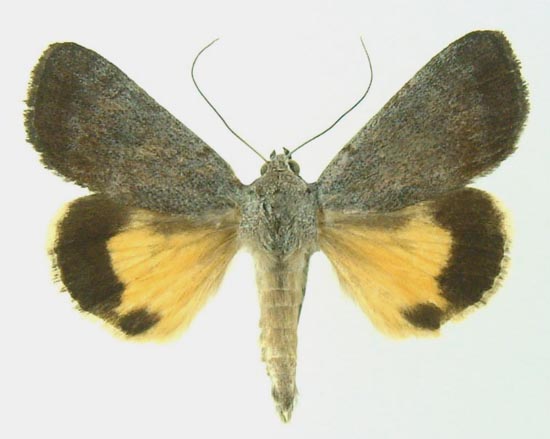Catocala messalina
Catocala messalina
kah-TOCK-uh-lahmmess-suh-LEE-nuh
Guenee, 1852

Catocala messalina male, Louisiana,
courtesy of Vernon A. Brou.
This site has been created by
Bill Oehlke at oehlkew@islandtelecom.com
Comments, suggestions and/or additional information are welcomed by Bill.
| TAXONOMY:
Superfamily: Noctuoidea
Family: Noctuidae
Group: Noctuinina
Subfamily: Catocalinae
Genus: Catocala, Schrank, 1802
| |
MIDI MUSIC
"Moon River"
copyright C. Odenkirk
MIDI CITYON.OFF
<bgsound src="moon.mid" LOOP=FOREVER>
|
DISTRIBUTION:
Catocala messalina, the Messalina underwing,
(wingspan: 40-45mm) flies from
Virginia south to
Florida and west to
Texas and north possibly ?? to
Kansas, mostly in evergreen oak habitats.
It has also been reported in
Arkansas,
Georgia,
Louisiana,
Mississippi,
North Carolina,
Oklahoma and
Tennessee.
Although its presence is unconfirmed, I would expect it is also found in
South Carolina, and
Alabama.
The forewing is a plain, dull, grey-green, darkening toward the outer
margin.
The hindwing is like that of the false underwing, having no inner black band.
The outer band is quite wide.
FLIGHT TIMES AND PREFERRED FOOD PLANTS:
Catocala messalina are on the wing in May (Texas record) and
probably June-August elsewhere.
The Catocala messalina caterpillar probably feeds on
live oak
(Quercus virginiana), sand live oak (Q. geminata), or
sand laurel oak (Q. hemisphaerica).
Quercus geminata is the most likely host in North Carolina.
Only occasionally is this species seen in Maritime Evergreen Forest.
ECLOSION:
Adults eclose from pupae at soil surface.
SCENTING AND MATING:
Catocala messalina females
emit an airbourne pheromone and males use their antennae to track the
scent plume.
EGGS, CATERPILLARS, COCOONS, AND PUPAE:
Eggs are deposited on
tree bark in the fall and hatch the following spring.
Larval Food Plants
Listed below are primary food plant(s) and alternate food plants.
It is hoped that this alphabetical listing followed by the common
name of the foodplant will prove useful. The list is not exhaustive,
although some species seem very host specific.
Experimenting with closely related foodplants is worthwhile.
Quercus geminata
Quercus hemisphaerica.......
Quercus virginiana
|
Sand live oak
Sand laurel oak
Live oak
|
This page is brought to you by Bill Oehlke and the
WLSS. Pages are on space rented from Bizland. If you would like to become a "Patron of the Sphingidae/Catocala Sites",
contact Bill.
Please send sightings/images to Bill. I will do my best to respond to requests for identification help.
Enjoy one of nature's wonderments: Live Saturniidae (Giant Silkmoth) cocoons.

|

To show appreciation for this site, click on the flashing
butterfly to the left, a link
to many worldwide insect sites. |
Return to Canadian Index
Return to Main Index


